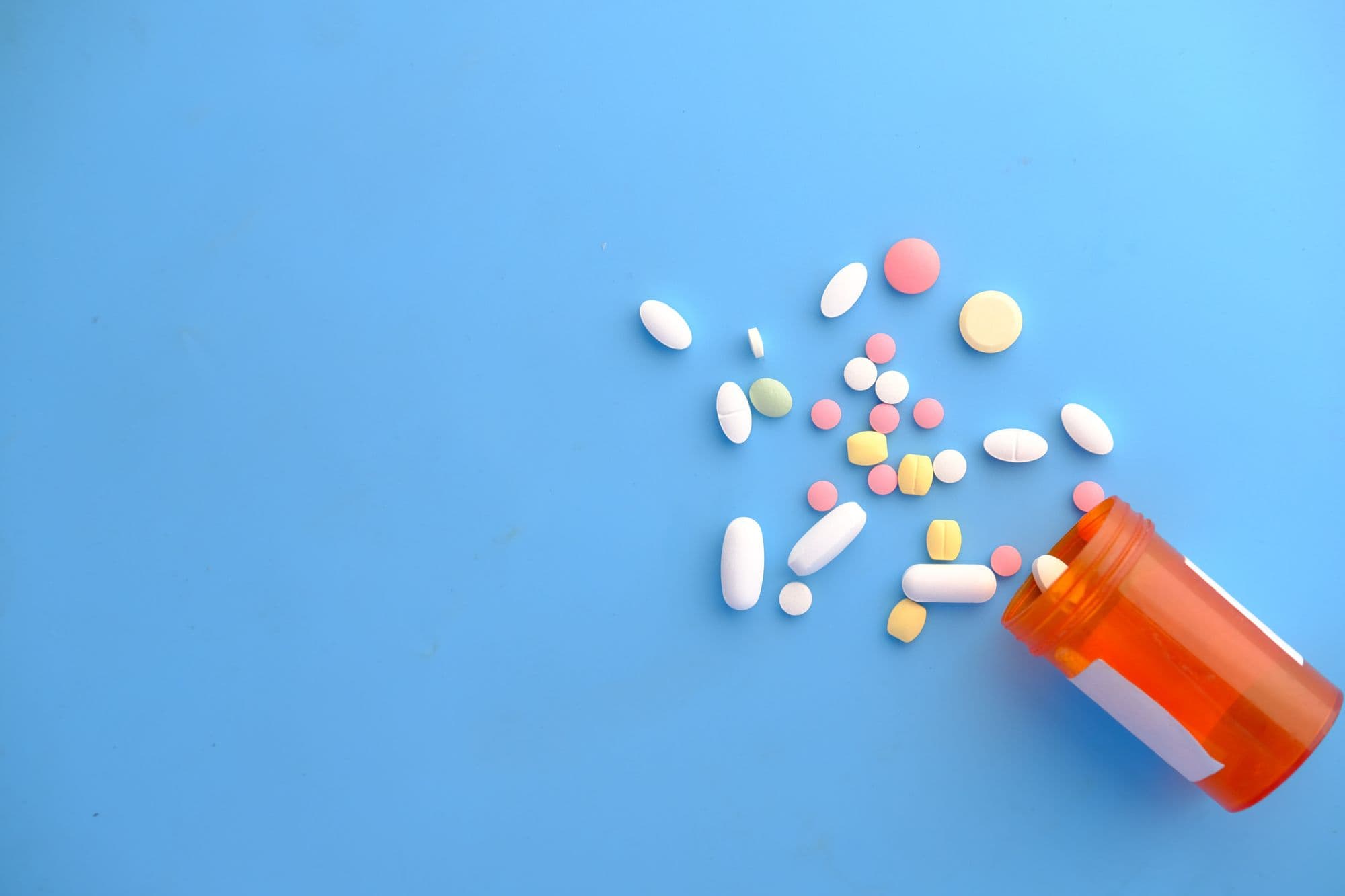The Difference Between Naltrexone and Acamprosate

In This Article
- What is Naltrexone?
- What Is Acamprosate (Campral)?
- Key Differences and Similarities Between Naltrexone and Acamprosate
- What Happens If You Drink Alcohol While Taking Naltrexone or Acamprosate?
- Is Naltrexone or Acamprosate More Effective to Stop Drinking Alcohol?
- Can Naltrexone and Acamprosate Be Taken Together?
- FAQ
Naltrexone and acamprosate (also known as Campral) are two drugs approved by the Food and Drug Administration (FDA) for the treatment of alcohol use disorder (AUD). While the medications treat the same condition, they do so in different ways and are used in different circumstances.
Naltrexone curbs alcohol cravings so people who are still drinking alcohol can cut down, and it helps people who’ve already quit stay abstinent. Acamprosate curbs cravings but is prescribed to people who’ve already quit drinking. Medications like naltrexone and acamprosate can be an important component of a holistic strategy to stop drinking or to cut-back on drinking.
Learn more about the similarities and differences between naltrexone and acamprosate below.
What is Naltrexone?
Naltrexone is an effective FDA-approved prescription medication used for the treatment of alcohol use disorder (AUD).
Numerous studies have found naltrexone reduces heavy drinking, frequency of drinking, cravings for alcohol, and alcohol relapse (1).
Oral naltrexone HCL (hydrochloride) is available in 50-milligram (mg) tablet form and can be taken daily. Learn everything you need to know about naltrexone.
How does naltrexone work?
Naltrexone is an opioid antagonist. It disrupts the chemical feedback loop that can make it difficult for a person to stop drinking once they have started. The medication treats AUD by binding to opioid receptors in the brain, blocking the euphoric and intoxicated feelings typically associated with drinking alcohol.
This euphoric feedback loop heightens cravings and can make controlling alcohol consumption very difficult.
Taking naltrexone for AUD allows people to not rely on willpower alone to drink less or stay abstinent from alcohol entirely (2).
What Is Acamprosate (Campral)?
Acamprosate, which is also known by the brand name Campral, is an FDA-approved prescription medication used for the treatment of AUD.
It is prescribed after a person has quit alcohol to help them curb alcohol cravings. It is available in tablet form and is usually taken three times a day (3).
How does it work?
Campral is believed to work by restoring balance to certain neurotransmitters in the brain that are destabilized by long-term alcohol overuse.
The exact way it works is not fully understood. Researchers continue to gather evidence to determine how acamprosate affects the body to curb alcohol cravings (4, 5).
Key Differences and Similarities Between Naltrexone and Acamprosate
| Comparison | Naltrexone | Acamprosate (Campral) |
|---|---|---|
| What it’s used for | Naltrexone reduces heavy drinking, frequency of drinking, cravings for alcohol, and alcohol relapse. | Acamprosate curbs alcohol cravings and helps prevent relapse. |
| How it works | Naltrexone binds to opioid receptors in the brain, blocking the euphoric and intoxicated feelings typically associated with drinking alcohol. | It is not entirely clear how Campral works. It is believed to restore balance to neurotransmitters in the brain that are destabilized by long-term heavy alcohol use. Research is ongoing. |
| How it’s taken | One oral naltrexone tablet is typically taken once per day. Naltrexone is also available as an extended-release monthly injection. | The recommended dose of Campral is 2 tablets taken 3 times a day. |
| When can you start taking it? | Naltrexone can be taken by people who are still drinking alcohol to help them drink less, or by people who have stopped drinking to help them maintain abstinence. | Acamprosate is taken by people who have already stopped drinking alcohol. |
| How long does it take to work? | Oral naltrexone begins to work about an hour after it’s taken. | It takes about 5 to 7 days for Campral to build to an effective level in the body. |
| Side effects | Usually mild. Common side effects include nausea, stomach pain, dizziness, headache. | Usually mild. Common side effects include diarrhea, nausea, headache. |
| Is a prescription required, or is it available over the counter? | Naltrexone requires a prescription. | Acamprosate requires a prescription. |
What Happens If You Drink Alcohol While Taking Naltrexone or Acamprosate?
Naltrexone blocks the pleasurable sensation you get from drinking alcohol. It does not react adversely with alcohol and does not make you feel sick if you drink alcohol while taking it. Many people who continue to drink take naltrexone to help them drink less (6).
Acamprosate is approved to help maintain abstinence from alcohol, so it is prescribed after you’ve already quit drinking. It is not indicated for use in people who continue to drink. However, if you do drink alcohol while taking acamprosate, it is unlikely to cause an adverse reaction (7).
Is Naltrexone or Acamprosate More Effective to Stop Drinking Alcohol?
Both naltrexone and acamprosate have benefits and drawbacks. While both medications treat alcohol cravings, acamprosate is indicated for people who are already abstinent from alcohol.
Naltrexone, however, can help people who still drink alcohol, to consume less, while also helping people who’ve quit drinking to continue to abstain.
The typical oral naltrexone dose is 1 pill taken once a day. The recommended Campral dose is 2 pills taken 3 times a day. Given the need to take acamprosate multiple times a day, naltrexone may be more convenient for many people (8).
Discuss with a healthcare provider which medications are appropriate for you to accomplish your goals in changing your relationship with alcohol.
Can Naltrexone and Acamprosate Be Taken Together?
Based on available evidence, combining naltrexone and acamprosate is well tolerated by most people.
However, the question of whether taking both drugs at the same time is more effective in helping people maintain their abstinence from drinking alcohol is less clear.
A 2019 research article cites the results of two clinical studies from 2010 and 2011 that showed no benefit to combining naltrexone and acamprosate compared with taking one or the other drug on its own (9).
On the other hand, a 2003 study conducted in Germany found that taking both medications together did benefit people in staying abstinent from alcohol (10).
While it appears to be safe to combine naltrexone and Campral, evidence for the effectiveness of taking them together is inconsistent.
FAQ
Is acamprosate the same as naltrexone?
No. While both medications are prescribed for the treatment of alcohol use disorder (AUD), and specifically to help curb alcohol cravings and maintain abstinence, they are two different medications.
Is there a danger of mixing acamprosate and naltrexone?
There’s no danger in taking acamprosate and naltrexone together, but the available evidence is inconclusive whether combining them is of any benefit.
Do either acamprosate or naltrexone help you sleep?
Neither acamprosate nor naltrexone are prescribed to help you sleep. Drowsiness is a possible side effect from either drug, but they are not sedatives. They are not prescribed as sleep aids.
In addition to medication, what else can curb alcohol cravings?
There are a variety of complementary approaches to managing alcohol cravings which can include diet, exercise, supplements and mental training such as meditation and cognitive behavioral therapy.
Is Campral an antidepressant?
No. Campral is believed to work by helping restore balance to neurotransmitters that are important in managing alcohol cravings.
Can acamprosate cause liver damage?
No. Acamprosate is not metabolized by the liver and does not cause liver damage.
What is another name for acamprosate?
Acamprosate is the generic name for the brand-name drug Campral. Acamprosate and Campral are the same drug. The two names are frequently used interchangeably
Is it possible to misuse Campral?
Campral has little to no misuse potential. It does not cause a “high” feeling and is not addictive.
About The Author
Ian Landau is a journalist who's written extensively about health and wellness since 2010. He is also the author of The Hypochondriac's Handbook (Skyhorse, 2010).
Related Articles
- How It Works
- Alcohol & Health
- Alcohol Misuse & Alcohol Use Disorder
- Strategies to Drink Less or Quit
- Treatment Options
- Medication-Assisted Treatment
- Recovery Stories
- Member Stories
- Moderation Stories
- Sobriety Stories
- ¹ Oar Health membership plans include access to the Oar Health platform, virtual consultations with a healthcare professional, and medication if prescribed by a healthcare provider. 3 month membership plan costs $297, equating to $99/mo.
- ² Self-reported by members after 6 months of Oar Health membership.
- ³ Verywell Health survey of Oar Health members, published March, 2023.
- ⁴ Prescription medication is available only if prescribed by a licensed clinician.
- ⁵ Compounded medications are prepared based on a prescription from a healthcare provider. They are not reviewed by the FDA for safety or efficacy.






